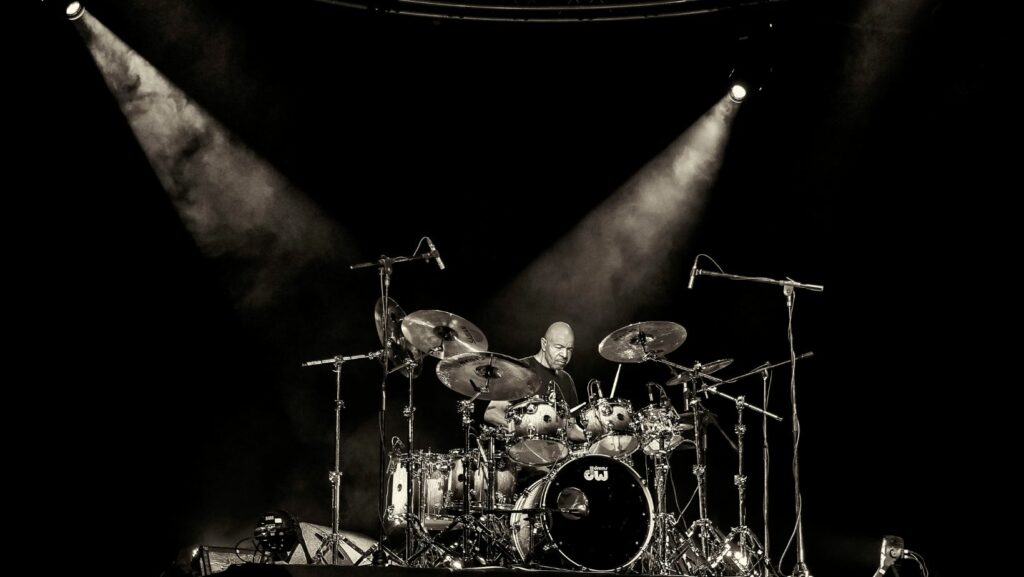There’s an undeniable allure to Roxy Music album covers. Their striking visuals have long served as a bold testament to the band’s avant-garde aesthetic. This article is set to delve into the captivating world of these iconic album covers, exploring their unique designs and the stories behind them. When creating visuals of such creativity, it helps to have the ideal image AI generator, which can elevate the design process.
The covers aren’t just eye-catching—they’re a reflection of Roxy Music’s innovative spirit. Each one tells a story, capturing the essence of the band’s music in a single image. From the glamorous models to the unconventional art direction, they’ve left an indelible mark on the music industry. If you’re looking to create your own captivating designs, an image AI generator free can be a great tool. So, buckle up, as we take a visual journey through the artistry of Roxy Music album covers.
Music Album Covers
 Roxy Music album covers enthralled audiences, showcasing an aesthetic evolution that significantly impacted the music industry. Their avant-garde designs evolved concurrently with their music, marking different eras in the band’s lifecycle.
Roxy Music album covers enthralled audiences, showcasing an aesthetic evolution that significantly impacted the music industry. Their avant-garde designs evolved concurrently with their music, marking different eras in the band’s lifecycle.
The adventure begins with their eponymous debut album, Roxy Music. Anticipations ran high as its cover flaunted an unconventional glam ambiance. Kari-Ann Muller’s seductive pose set the tone, breaking away from the tradition of displaying artists on the album covers. This bold choice heralded the arrival of a band ready to defy conventions, both musically and visually.
Taking daring steps with their second album, “For Your Pleasure,” they disrupted the norm, featuring Amanda Lear in an arresting black attire, leaving more room for intrigue. This entrancing play implied a different kind of pleasure—one that was unabashedly provocative and edgy. It’s fair to claim that, in these early years, Roxy Music album covers broke traditional limits, providing a tangible touchpoint for the band’s innovative approach.
Iconic Music Album Covers
 Roxy Music’s album covers signify much more than eye-catching aesthetics. They’re visual embodiments of musical evolution, emblematic inception, artistic intricacies, and occasionally, even controversy.
Roxy Music’s album covers signify much more than eye-catching aesthetics. They’re visual embodiments of musical evolution, emblematic inception, artistic intricacies, and occasionally, even controversy.
Roxy Music’s self-titled debut album, released in June 1972, offered the first glimpse of the band’s unconventional creative direction. Missing were the customary band portraits or standard pop imagery. Instead, observers found themselves looking at the seductive and glamorous image of model Kari-Ann Muller. The cover’s design, complete with the Eric Boman shot, boldly challenged the norms, laying a robust foundation for Roxy Music’s future discography.
The band’s second studio album, “For Your Pleasure,” further explored uncharted territories. Marrying music with fashion, it featured the sophisticated yet enigmatic beauty of Amanda Lear, dressed in a black leather outfit with a black jaguar. The vision of photographer Karl Stoecker, complemented by the art direction of Anthony Price, produced an illustrative metaphor, enhancing the album’s aura and creating a visual companion to the band’s experimental soundscapes.
Design Elements and Aesthetics
 Unfolding the layered mysteries of Roxy Music album covers reveals an intriguing interplay of design elements and aesthetics. This section delves further into these elements, offering a fresh perspective on the unique visual language that Roxy Music developed and portrayed through their album covers.
Unfolding the layered mysteries of Roxy Music album covers reveals an intriguing interplay of design elements and aesthetics. This section delves further into these elements, offering a fresh perspective on the unique visual language that Roxy Music developed and portrayed through their album covers.
Embracing the power of typography and imagery, Roxy Music’s album covers presented a compelling blend of bold, innovative designs. The covers leaped beyond mere packaging, metamorphosing into art forms of their own. A great instance of this interplay is the cover of “Avalon,” the band’s last studio album. It flaunts an ethereal image of a medieval knight, rich in color and nuance, coupled with a simple, elegant typeface. This fusion not only creates a visually stunning motif, but it also communicates the rich tapestry of the album’s sound.
The Role of Fashion in Album Artwork
Seamlessly blending music and fashion, Roxy Music’s album covers positioned the band at the cutting edge of style. The synergy of these two elements fostered a unique aesthetic that helped shape the band’s identity. This blending is evident in the cover of “For Your Pleasure.” Here, Brian Eno, flamboyantly draped in a feathered ensemble, personifies the politically charged, genre-defying sound of the band. Thus, fashion becomes more than an accessory. It transforms into a powerful narrative tool, subtly conveying the core attitude and spirit of Roxy Music’s sound.

